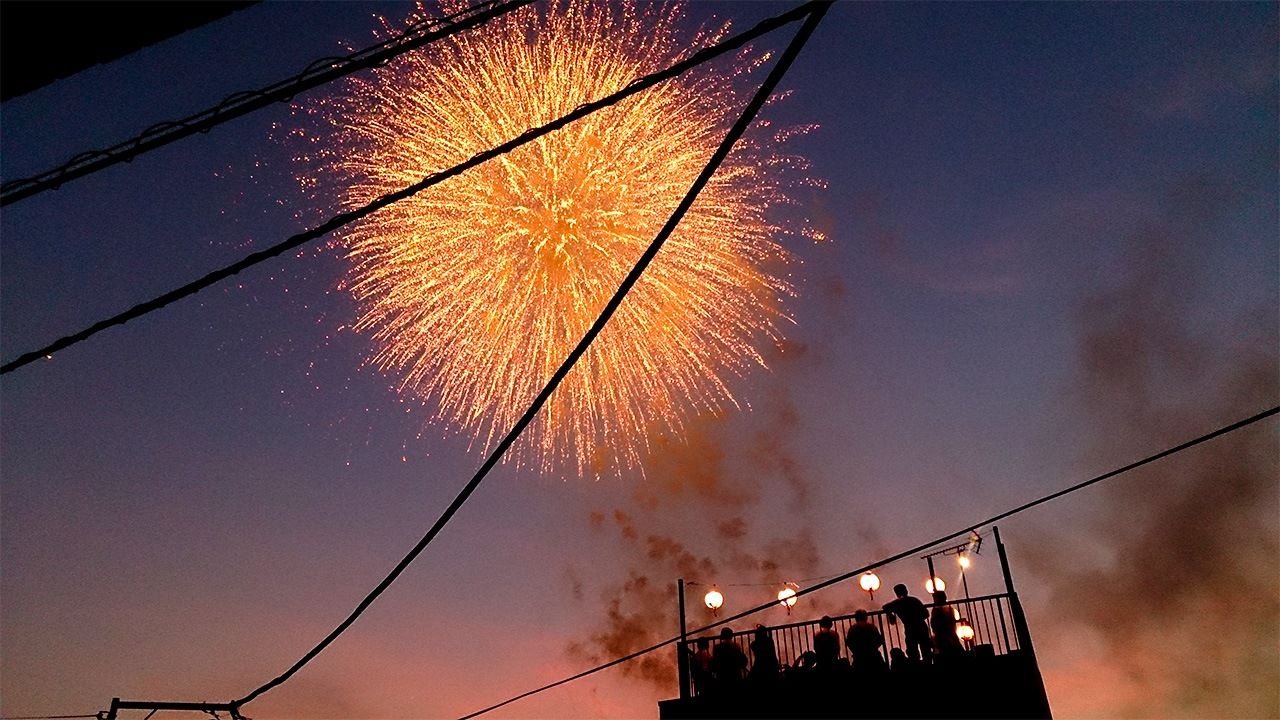
Summer, Fireworks, and Fragments of Time
Culture Lifestyle- English
- 日本語
- 简体字
- 繁體字
- Français
- Español
- العربية
- Русский
Summer Without Summer Sensations
The summer of 2020—season of an endless rainy season, constant increases in infection rates, and an unexpected change in prime minister—has come to an end. There were no fireworks and no summer festivals. There weren’t even any bon odori festival dances, and people could not go home for the holidays. Even more significantly, the Tokyo Olympics, which were meant to welcome visitors from all over the world and generate huge excitement, went up in a puff of smoke, leaving now meaningless “Tokyo 2020” logos plastered over everything. In the end, I think that most people probably weren’t able to enjoy a single summery activity.
An ordinary summer comes with its own set of pleasures. There are the usual local fireworks displays, summer festivals, bon odori, and outdoor beer gardens, but there are also LGBT events such as the Rainbow Reel Tokyo Festival, featuring sexual minority movies, and the Tokyo Rainbow Festival, organized by the Shinjuku Nichōme Shinkōkai. Being deprived of each and every one of these pleasures this summer made me feel like a robot working in an empty, postapocalyptic metropolis, watching the days go by, doing nothing but repetitive work tasks.
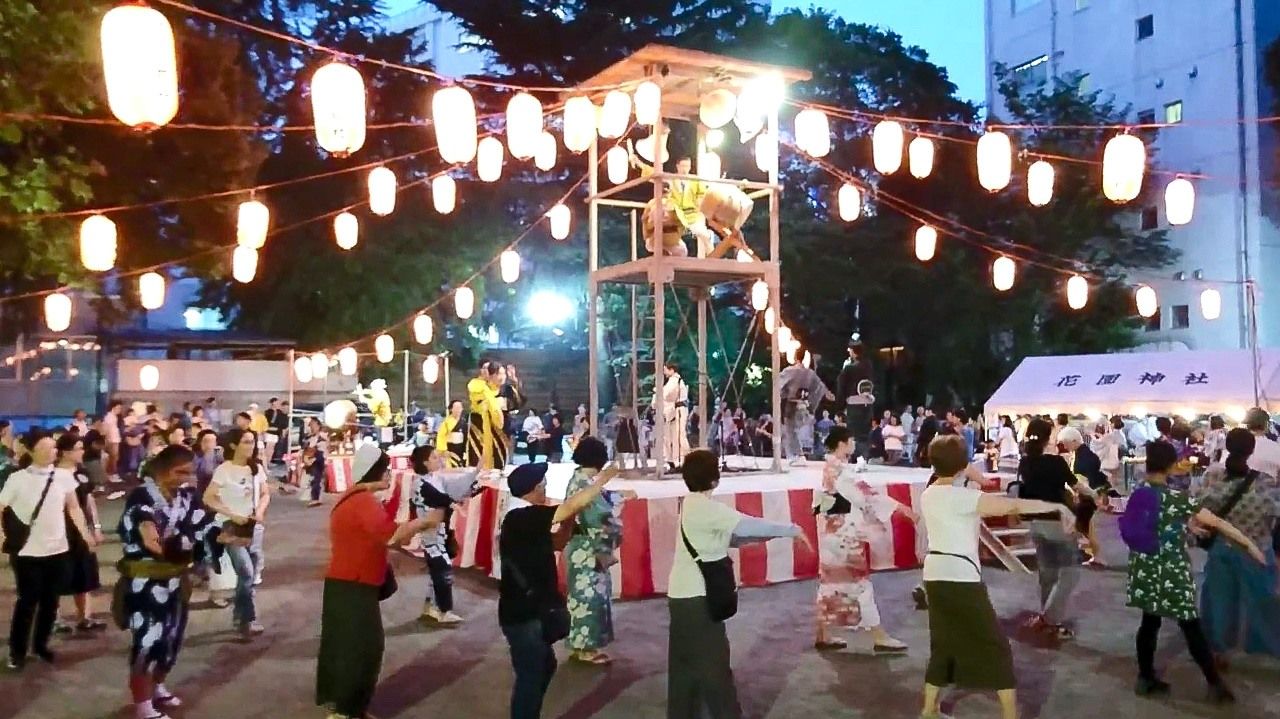
Bon odori at Hanazono Shrine in Shinjuku in summer 2019
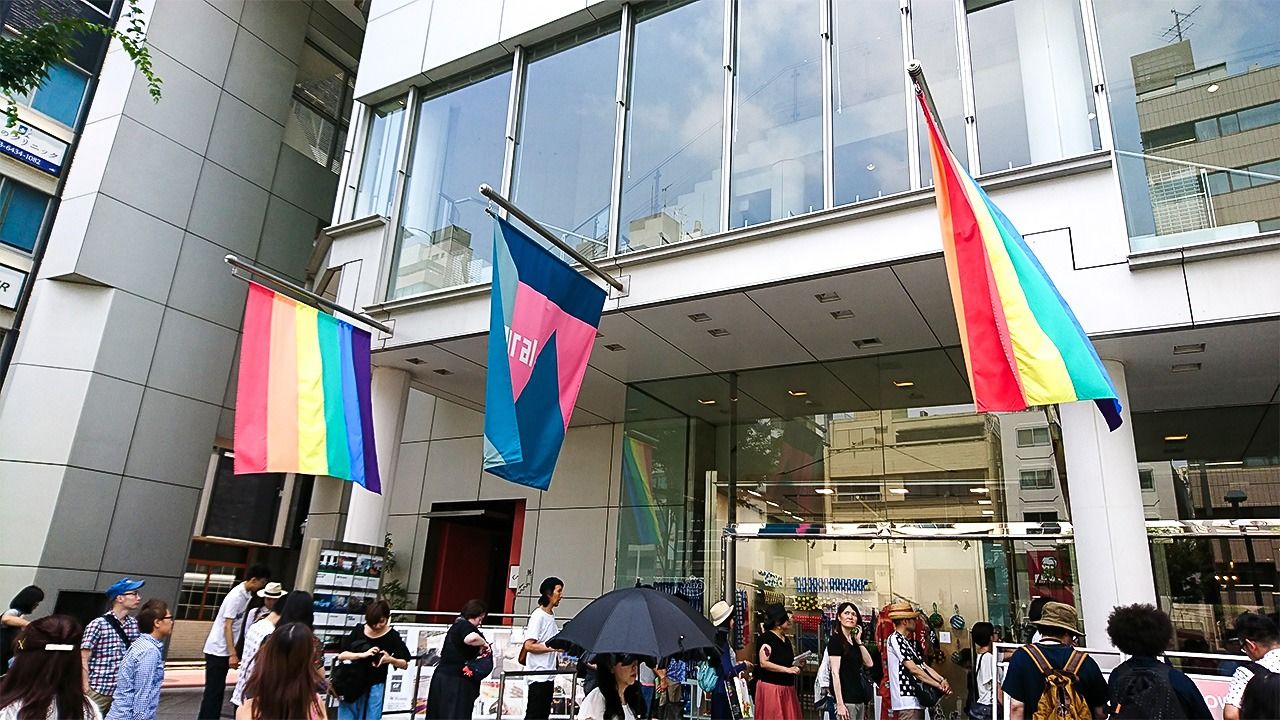
Summer 2018’s Rainbow Reel Tokyo film festival (Shibuya Spiral Hall).
Specialness of the Season
I love Japanese summers. They are short and fleeting, and there is a sense of melancholy when they are over. They are gone in the blink of an eye, and you desperately want to reach out and stop the time passing. You want to savor each and every day. Of all the seasons, it is the only one that heralds a kind of death with its passing. It is like the fading of youth, a sort of fall from the heavens, and its departure must be mourned like the passing of a brilliant comet.
There are memories, of course. I visited Scandinavia for the first time ever in the summer of 2017. I bore the high price of everything as I visited Hans Christian Andersen’s hometown of Odense, Denmark, and Kronborg, the Helsingør castle that was the setting for the play Hamlet. When I met with a friend for the first time in years in the summer of 2018, our conversation brought back all kinds of memories, and I used that experience to write my novel Itsutsu kazoereba mikazuki ga (Count to Five and the Crescent Moon), which went on to be shortlisted for the Akutagawa Prize in the summer of 2019. It seems fair to me that it did not win, but the fact that I was nominated opened up all kinds of great connections for me, and was the major event of that year’s summer.
This feeling that there is something special about summers brings a multitude of riches to literary works. I think that one of the reasons why Count to Five and the Crescent Moon was so well received is that it captured the particular seasonal feel of Japanese summers. The kakigōri shaved ice desserts and the fireworks, the heat emanating from the asphalt and the scent of sweat, and the inexorable passing of time. That’s it. There would be no story had there been no summer. Had there not been a Japanese summer. That unreal, fleeting love story was a perfect match for the fleeting season.
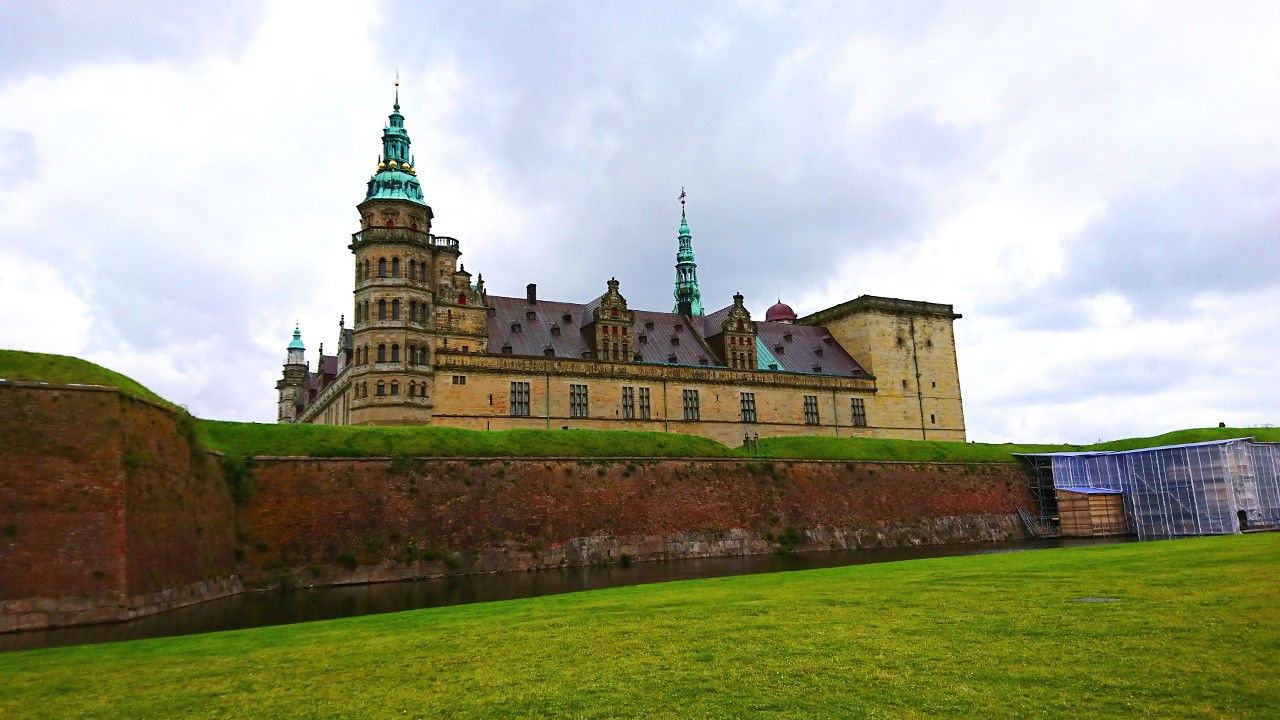
Kronborg Castle in Denmark, the setting for Hamlet, which I visited in the summer of 2017.
The Fireworks of Taiwan
What would it be like had it been a Taiwanese summer? First of all, there would be no feeling of fleetingness. It feels as though the relentless heat that vaporizes everything will go on forever, and the torrid temperatures in July and August mean that you don’t even want to step out of the door. This is not the time for fireworks or festivals. You can’t even bear to put on a yukata. The only way to survive is to lock yourself in a room with good air conditioning, wearing only a T-shirt and shorts. Added to that, the weather patterns bring thunderstorms and heavy rain almost every afternoon, so that, if you make the mistake of going out, you will end up either covered in sweat or soaked to the skin. In Japanese meteorological terms, a maximum daily temperature of over 25° is described as a natsubi, or summer day. Based on that, the Taiwanese summer lasts for over half the year. You can imagine how it can hardly be described as fleeting. So, whereas an image of fleetingness associates fireworks with summer in Japan, such an association is inconceivable in Taiwan.
In Taiwan, fireworks are not tied to any particular seasonal image, but if you were to insist, they are probably more associated with autumn or winter. The most famous fireworks displays in Taiwan are the ones that take place for the New Year, such as the famous show at the Taipei 101 skyscraper, and these obviously take place in winter. There are also large-scale fireworks displays for the National Day of the Republic of China on October 10. I loved playing with fireworks when I was a child—shooting rockets at a wall, putting balloon fireworks upside down before lighting them, in fact, doing all kinds of very dangerous things just for the thrill of it. Doing any of that would be inconceivable in a big city, but it was possible in rural Taiwan.
Once autumn arrived, we would all wait impatiently for the mid-autumn festival (known as Jūgoya or harvest moon in Japan), August 15 according to the old calendar. For some reason, tradition in Taiwan has it that you can set off fireworks from the mid-autumn festival onward. In the run-up to the festival, you can hear the whistle of rocket fireworks here and there, with the volume steadily going up as the festival itself draws near, echoing late into the night. All kinds of fireworks become available in supermarkets and other shops. The standard options were rocket and balloon fireworks, but there were all kinds of different ones, from snake ball fireworks and smoke balls to firecrackers, Catherine wheels, and swirling tops. But there were none of the sparklers you see in Japan, and which carry the mood of Japanese summers so well. We would buy bundles of fireworks and get together with friends in the evenings to go to an empty plot nearby and have a huge fireworks party. The adults would barbecue in front of their houses, and when the scent of grilled meat reached us, it was time to go and eat. Overly energetic children have no understanding of moon viewing, of course, and I could count on the fingers of my two hands the number of times I actually looked up at the moon. For us, it was much more a question of fireworks and barbecue than the fairies or rabbits that were supposed to live on the moon. So that’s how rural Taiwanese children used to spend the mid-autumn festival.
It remains a mystery why we had fireworks and barbecue at the mid-autumn festival, but that’s the thing about culture and traditions. Nobody needs a logical explanation as to why you publicly give people you care about chocolates on St. Valentine’s Day; nor do people in Japan give much thought to returning the favor on White Day. And the Japanese habit of eating Kentucky Fried Chicken at Christmas has finally become the stuff of legend. National Foundation Day on February 11, and the Empire Day that preceded it during the wartime era, don’t make a whole lot of sense. The country and the people need holidays, though, and businesses and people alike want events on their calendar. It doesn’t matter whether the trigger is business or something else. If people keep enjoying it, it will become ingrained, and that is how culture and traditions are created. These are held up as ponderous standards, but there’s nothing very complicated about them.
A Japanese Passage of Time
Since moving to Japan, I have become more and more aware of the Japanese sense of the seasons. I have grown to appreciate the enjoyment of the changing of the seasons, something I was hardly conscious of when I was in Taiwan.
“In spring, hundreds of flowers; in autumn, a harvest moon; in summer, a refreshing breeze; in winter, snow will accompany you. If useless things do not hang in your mind, any season is a good season for you.”
—Chinese Zen monk Wumen Huikai, The Gateless Gate
As these lines show, there are landscapes to love in every season, and each brings something different to literary works. The heat and fleetingness of summer led to Count to Five and the Crescent Moon. And winter—with its loneliness and pain cutting through you like a freezing wind, and its quest for warmth and yearning for the rebirth of spring—led to my writing Porarisu ga orisosogu yoru (The Night of the Shining North Star). Spring is attuned to encounters and partings, and autumn is filled with the expectation of loneliness.
Needless to say, Taiwan also has spring, summer, autumn, and winter, and the seasonality that goes with them. For example, graduation ceremonies are summer events, symbolized by the flamboyant blooming flame trees. In the spring, many people visit famous blossom-viewing sites to admire cherries, tung trees (Vernicia cordata), and azaleas. There is no snow, but Christmas is also celebrated. But it seems to me that this perception of the seasons isn’t as clearly ingrained in the psyche of the people. And in any case, this year all seasonal perceptions have been tainted by the coronavirus, and 2020, when the scent of flowers has been replaced by the scent of masks, could well be the hardest ever year for writers to write.
The 2020 Experience
Years from now, if I am asked what I did in the summer of 2020, I will probably not be able to come up with an answer. As the rainy season continued until the end of July, there were no portents of summer, and when it finally ended, the number of infections rose rapidly. Urban dwellers felt guilty about going anywhere, and so everyone confined themselves to their homes. My new book was published on time but, of course, there were no book signings, bookstore tours, or other launch events. When I ego-surfed on Twitter, some impressions of the book started popping up, but it was as though the faces of the readers were invisible, couched in a kind of fog. They say that writers are used to being alone and even prefer that state, but this was just too much to bear. And even though I wanted to go out to Shinjuku Nichōme or Kabukichō and party all night, the risk of infection was high, and all the shops had reduced opening hours, so that was a no go.
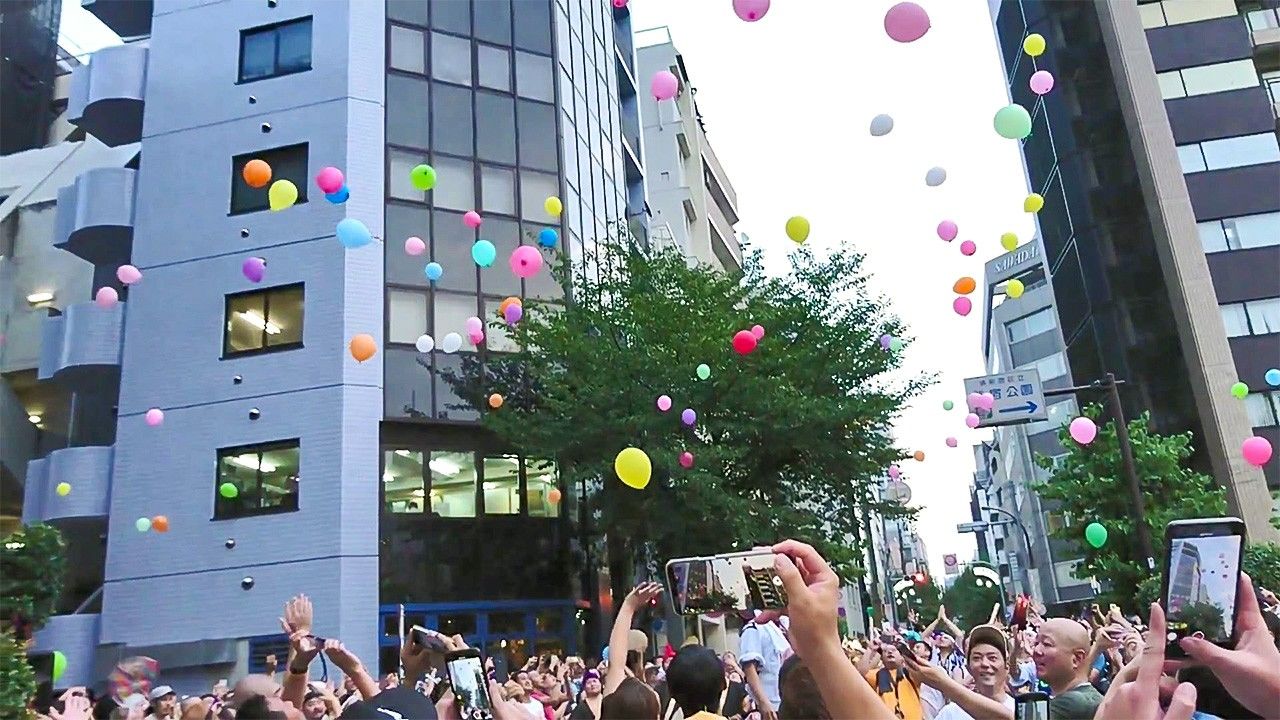
Balloons are released in Shinjuku Nichōme at the Tokyo Rainbow Festival in summer 2019.
The only fun thing that actually happened for me was a camping trip to the beach, with seven woman writers getting together and staying overnight. We walked on the beach in the afternoon, set off fireworks in the evening, and got up to see the dawn the next morning. As we got into the spirit of things, we had fun stuffing ourselves with watermelon, playing games, and complaining about useless Japanese men. The memory of this meager overnight stay will probably be the one thing that will stay with me from this summer.
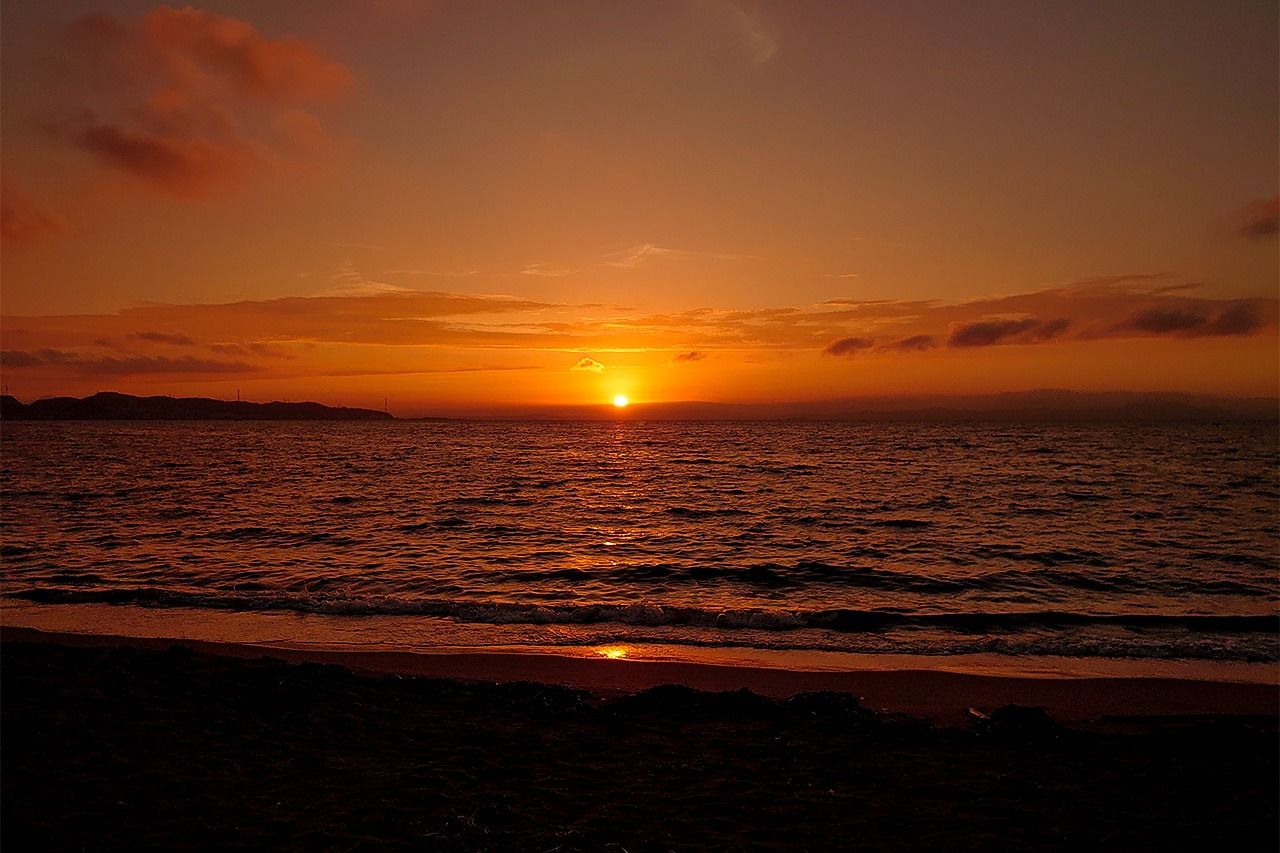
Dawn at the beach, at the summer 2020 writers’ gathering.
As time goes by and disperses, the fragments are caught up in memory. These fragments of time occasionally put in an appearance, bringing a smile to my face, or else opening up a cutting wound. Summer afternoons spent at the beach with friends. Cold winter evenings spent alone after splitting up with a lover. Cherry blossoms swirling as they fall, and the flamboyant flame trees. The violence of the rain in a thunderstorm, and the relentless singing of cicadas. The shouts of the throngs carrying mikoshi portable shrines, and the crimson leaves of autumn. The drizzle of cold rain, and white snow piling up as it falls thick and fast. I am made as I am now from all those countless fragments of time.
If there was one thing I could wish for, it would be to live through those fragments once again.
(Originally published in Japanese. Banner photo: The summer 2015 Sumida River fireworks display. All photos by the author.)